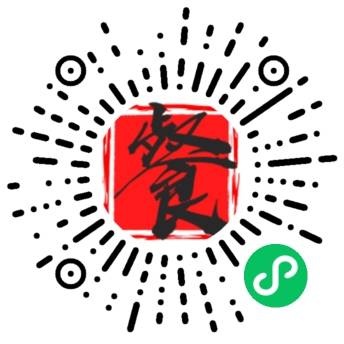▲Replynumber “3” to join in F&B WeChat Group
Source:Accenture Consulting
Author:CHRISTIAN REQUENA
Executive Summary
Advertising fraud is a growing challenge that not just impacts companies financiallybut also tarnishes their brand reputations.The Chinese digital market, thoughmaking phenomenal progress currently, iswitnessing an increase in ad fraud-relatedcases. Invalid traffic is on a high and adviewability is decreasing on personalcomputers and mobile websites of China.The reasons for such a scenario are quiteevident—a non-transparent ecosystem,invalid traffic and technological limitations.An opaque and biased media supply chainis resulting in potentially underminingbrands’ interests and yielding financiallydamaging results. Unavailable or inadequatetechnological capabilities are making it tough for companies to fully capture InvalidTraffic (IVT).In such a challenging landscape, Chinarequires a comprehensive strategy tocombat and overcome the ad fraud menaceand its consequences. Accenture offersthe following recommendations to protectbrands and investments based on our deepknowledge and experience in the digitalmarketing space: • Optimize the media team’s operatingmodel • Develop in-house capabilities • Build internal ad technologicalcapabilities • Leverage latest technologies • Adopt Open Source Industry SDKsrecommendations Introduction Global consumer goods companies are cuttingdown on their ad spending due to slow growthrate. The repercussions are being felt amongadvertisement and media companies worldwide.According to a Financial Times article datedAugust 25, 2017, “Magna Global, the mediabuying agency [is] forecasting global growthof 3.7 per cent to US$505 billion this year ascompared to 5.9 per cent in 2016”.1 Accordingto P&G’s Chief Brand Officer, the media supplychain is having its own share of challengescaused by fraudulent and unethical practices. The L2 Insight Report 2017 recommends thatbrands must emphasize more on quality andviewability metrics to understand ad viewingpatterns, prioritize where to place ads and seekbetter conversion opportunities. However, even in this difficult scenario,the Chinese digital market is witnessingunprecedented growth—it is expected todouble in the next three years. China’s overall admarket is the second biggest in the world andis growing at a high 56.5 percent. It is expectedto reach US$122 billion by the year 2020 fromthe current year 2016. Of this, a large part isdigital: 53 percent of China’s population as onDecember 2016—about 731 million people—areactive Internet users; and the digital ad marketis growing at 56.5 percent. Brands are constantly increasing theiradvertisement budgets, especially on digitalplatforms, to maintain market share and capturenew consumers in China’s fast-growing market.The share of digital ad spending in proportionto total ad budget is set to increase from 52percent in 2016 to an estimated 68 percent by2020 (see Figure 1). In keeping with this trend, advertisers areleveraging data-driven, programmatic marketingtechniques to improve brand engagement andpersonalization with consumers on popularsocial media platforms such as WeChat.Empowered by digital channels, the new digitalconsumers have access to wide range ofchoice, and tend to have low brand loyalty. Bigadvertising companies such as P&G, Coca-Colaand L’Oréal are therefore keen to not only spendon digital advertising, but also ensureits effectiveness. Figure1, Source: March 2016 – eMarketer AD Fauds –a Global Reality Though the future looks promising, there are some concerns on how ad frauds are hampering ad effectiveness in China.Challenges such as non-transparent ecosystem, invalid traffic and technological limitations are posing hurdles in the growth rate of China’s digital advertising market. Adbug’s 2017 Q1 Media Report states that out of 12 billion impressions verified in the Real Campaign, China saw an average of 29.5 percent invalid traffic (71.5 percent direct purchase) and only 25.5 percent viewability rate (4.9 percent direct purchase) on personal computers and mobile websites. These figures reveal how the profit and brand reputation of Chinese companies can get impacted if they invest in digital advertising. Programmatic digital advertising was intended for brands to reach out to target consumers and promote the ads at the right moments, in the right spaces. However, with such numbers, it is quite evident that programmatic or other marketing tactics are facing hurdles in achieving ad goals and may require additional competencies. So, the question arises, why are the results not visible? The answer lies in the manner in which the digital advertising market works. To understand this, let us break the problem intothree main points: • Non-Transparent Ecosystem • Invalid Traffic and Brand Safety • Unavailable or Inadequate TechnologicalCapabilities 1. Non-Transparent Ecosystem Charlie Wang, Chief Operating Officer of ReachMax, in his four-part online article, “Practical Guide to Programmatic Planning in China,” throws light on how the buying platform could be biased towards its own inventory pool selection. China’s Demand-side Platforms (DSP), due to its initial resistance to transition into an exchange inventory, adopted a hybrid model, DSPAN. This type of model allows to pick from a fixed ad network publisher list to fulfil the needs of an advertiser, while also buy inventory through the exchange for performance oriented advertisers. As a result, DSPs were given preference to sell their own ad network inventory to buy on the exchange, undermining brands’ interests and yielding financial losses. Jasmine Xu, president of P&G’s E-Business & Branding in Greater China region, in the Mobile Marketing Association (MMA) Forum in Shanghai of August 2017, urged companies to look beyond the excessive commercial interests and bring in more transparency in the digital advertising industry. 2. Invalid Traffic and Brand Safety As many as 78 percent of ads seen on the screens are invalid traffic that does not meetthe quality or completeness criteria, and areartificially inflated impression counts that theadvertisers pay for.Unlike the general nonpurposeful invalid traffic, Sophisticated Invalid Traffic (SIVT) deceptively manipulates the adserving process. Some of the different types ofSIVT are: Multiple tracking tags:multiple tags on a singlecreative ad results in the real number being multiplied by the number of tags. Ad stacking:multiple ads stacked onto eachother with only the top-most ad visible.Pixel-stuffing:ads stuffed in a 1×1 pixel that areinvisible to a human eye. A study by the Association of NationalAdvertisers once found 85 ads on a single page,of which very few were visible to consumers.8This means massive ad inventory spaces on adnetworks/exchanges were unavailable but sold nevertheless. This violates the rules laid outby the Interactive Advertising Bureau (IAB) inthe Media Rating Council’s (MRC) Viewable AdImpression Measurement Guidelines. According to the AdMaster’s White Paper, TheWorld Federation of Advertisers, estimates that“10 to 30 percent of online advertising slots arenever seen by consumers because of fraud,” andit forecasts that marketers could lose as muchas US$50 billion a year by 2025. Brand safety is another challenge companies face on a regular basis. For example, anautomobile company’s ad injected into anotherautomobile company’s website, or worse,placed in a pornographic website will tarnishthe brand reputation tremendously. 3. Unavailable or Inadequate techenological Capabilities Accurate measurement of viewability gives boththe demand and supply sides a clear picture onthe actual impact of ad spending, and therebybringing transparency to the entire operations.The IAB has suggested that brands utilize:“front-end and back-end techniques… requiringsources of information made from multidatapoint assessment of transaction sets”.However, the reality is that most of thecurrent ad-verifcation solutions havesevere limitations. Pixel can only receive limited informationand can be easily manipulated. Similarly,IP addresses can only provide third-partyinformation, which can be manipulatedon the device that the ad is being viewed(network interface identification).
Capabilities Required
1.Createnew products and business models to optimize the efficiency andeffectiveness of their internal operations.
2.A strongcybersecurity approach using deterministic proof and threat modeling to prove human exposure on an impression level.
3.Leveragethe expertise from digital marketing strategy and transformation to improve customer experience, operating models and on-going operations, organizational design, and technology strategy and platforms.
4.Alignwith organizations such as Accenture that offer services through the corecapabilities of their media management and digital marketing teams in addition totheir patented technologies and strategic partnerships.
The Road toTransformation
China needs a comprehensive strategy to combat the challenges caused by a non-transparent ecosystem, invalid traffic, lack of viewability measurement and brand safety, and inadequate technological capabilities. MMA has recommended to actively develop and promote its software development kit in China. Accenture offers the following recommendations based on our deep knowledge and experience in the digital marketing space: Optimize your media team’s operating model Michael Tiffany, CEO of White Ops, says “you need to make sure your own house is in order first. We have found… huge media companies buy traffic because someone at that organization… is going to third parties to buy traffic”.11 All stakeholders must jointly formulate a foolproof strategy and mechanism to fight against these unethical practices. Develop in-house capabilities China must build a long-term programmatic strategy, insource technology, adjust the operating model, improve internal capabilities, build COEs and upskill staff through trainings to increase internal ownership of digital strategy and strengthen governance of agencies. Build internal ad technology capabilities Design a global ad technology stack and bring contracts in-house to increase direct control of digital marketing costs and strategy, while increasing transparency and ownership of data. By doing so, companies can reduce the complexity of the ecosystem and eliminate parts of the opaque fee structures and rebatesystems. Leverage latest technologies Another way of disrupting the current ecosystem is through decentralizing auditing by using blockchain solutions. Since this technique can be used to verify where ads are delivered,“brands can take ad deliveries from an ad server,then release them to the mining machines in the blockchain, which would analyze them,and scrub them”12 of questionable behavior.This creates footsteps that brands can trace for better transparency. Adopt the right technology JavaScript is a function-based scripting language and an effective tool to help counteract IVT, measure viewability and find ads around brand unsafe context. It actively gathers information such as page appearance,visitor information and much more that are cross-referenced to find true viewability. Though JavaScript technology exists in China, it is yet to be widely accepted. As compared to Pixel and IP, JavaScript is the most effective technology.
Figure 2
in preventing IVT, measuring viewability andensuring brand safety (see Figure 2). Embrace the industry’s fraud-fighting resources Companies must register with the Trustworthy Accountability Group (TAG) and become TAG-certified. At a minimum, verificationvendors should be accredited by Media RatingCouncil (MRC), while publishers must have the Demand Alliance for Audited Media (AAM) Quality Certification. The Ad Fraud practicesand their implications need to be addressedbased on the recommendations of Open Source Industry SDKs.
Protect Your Brand and Investments
Step 1:OPTIMIZE MEDIA TEAM’S OPERATING MODEL Set up a foolproof strategy and mechanism to fight unethical practices.
Step 2:BUILD STRONG CAPABILITIES Technology upgradation, COEs, trainings and long-termprogrammatic strategy.
Step 3:ESTABLISH AN INTERNAL TRADING DESK Achieve transparency, data ownership, and direct control of costs and strategy.
Step 4:UPGRADE CONSTANTLY Keep an eye on emerging technologies in the digital space.
Step 5:ADOPT THE RIGHT TECHNOLOGY Adopt JavaScript to prevent invalid traffic, measure viewability and ensure brand safety.
HowCompanies Can Improve Their Digital Marketing Operations
Unethical and fraudulent practices are not just making Chinese companies lose considerable revenue, they are also eroding their trustworthiness in the market. The lack of appropriatetechnological capabilities has always been a concern for Chinese companies in bringing transparency and efficiency into the country’s media buying space.
Inadequate collaboration between companies and media partners along with the absence of credible certifications for publishers is resulting in an opaque system that is complex and full of malpractices and conflict of interests.
Accenture’s deep knowledge and expertise in the digital marketing space enables companies to overcome their diverse challenges and help them deliver powerful and innovations solutions to their customers. Our recommendations will help companies drive better transparency into the complex digital advertising processes, weed out invalid traffic and other fraudulent practices, improve credibility and bring technical prowess to build a robust and transparent system.
1.Collaborate withTrustedPartners to Adopt a New Digital Advertising Approach
Companies must leverage capabilities in the areas of marketing services, analytics services, mobility services and digital transformation to bring overall transparency to the media supply chain. A new media buying model with an inhouse or trusted partner managed service can bring huge benefits, such as taking partial ownership of your agency work that includes its DMP and trading desks, bringing innovation to traditional core models.
2. Leverage JavaScript and Blockchain to Manage IVT, Brand Safety and Viewability
Companies need to support safer programmaticpurchasing and promote global standards in the Chinese market through technologies such as JavaScript. JavaScript tags are especially coded to measure programmatic campaign viewability.Companies can complement this technology with smart strategies such as contextual analysis to yield the best outcome.
3. ALIGN WITH CERTIFIED PUBLISHERS TO IMPROVE A BRAND’S MARKETING CAMPAIGNS
Companies need to align with certified publishers to achieve greater transparency in the system. In China, agencies usually hire thirdparty vendors to verify content and processes. However, instead of self-auditing, industry must move toward third-party vendors with credible certifications, bringing better transparency and a new level of trust among publishers and advertisers.
4. Encourage Industry Leaders to Support Open Source Industry SDKs
In one of the highlights of Shanghai’s MMA forum, leaders from various parts of the media buying chain, stemming from agencies to publishers, stood together to form a commitment to better the ecosystem. The result is for example the MMA-approved SDK toolkit. The toolkit contains documents, technological processes and standards to increase transparency. However, it needs to be comprehensive and effective, empowering the leaders to fight against the industry problems and transform China’s media buying landscape for the better.
Transform Your Business Through Digital Technologies
Accenture Digital has the capabilities in digital marketing, analytics and mobility to help clients unleash the power of digital to transform their businesses. We help clients use digital technologies to deliver more meaningful and relevant customer experiences across all channels and customer segments, as well as to create new products and business models and to optimize the efficiency and effectiveness of their internal operations. We are one of the world’s largest end-to-end digital providers with more than 36,000 digital professionals serving clients in 49 countries. With 50 Accenture Interactive design studios, R&D offices and Centers of Excellence, we have developed more than 1,000 mobile applications for 400+ clients in the past three years.
We help companies with a multitude of services through our capabilities in Media Management and Digital Marketing, such as Content Development and Management, Consumer Data Management and Analytics, Digital Campaign Optimization, Digital Media Audit, MROI Optimization, Digital Innovation, Analytics as a Service, Technology Implementation and Accenture Assets.
Accenture is unique in its ability to bring together leading digital and industry expertise from digital marketing strategy and transformation to customer experience, operating models and on-going operations, organizational design, and technology strategy and platforms. We are number one13 in world’s 15 largest digital agency networks and the world’s 25 largest consolidated agency networks. We offer our services through the core capabilities of our media management and digital marketing teams in addition to our patented technologies and strategic partnerships.
Glossary • Impressions: An event where the audience views an ad on the web page. • Cost per Mille (CPM): Unit of price for 1,000 impressions on a web page. • Programmatic purchase: A process of aggregating and analyzing data to optimize the best target audience for advertisers to reach consumers through digital automation or physical agencies. • Direct/Programmatic Direct Buy (PDB), where advertisers purchase impressions directly from the publisher and are measured by CPM. • Real Time Bidding (RTB), where online impressions are the bought and sold through real-time auctions that occur in the time while a webpage is loading. • Invalid traffic (IVT): digitally engineered virtual traffic that is created artificially and not driven by human impressions. • Sophisticated Invalid Traffic (SIVT/fraudulent impressions): intentionally deceptive practices that were designed to manipulate legitimate ad serving processes. • General Invalid Traffic (GIVT): non-intentional invalid traffic that happens from servers or data centers. • Valid traffic: traffic driven by impressions. • Viewable impression: a served ad impression that is contained in the viewable space of the browser window based upon pre-established criteria such as pixel size and length of the time the ad is shown. • Demand Side Platform (DSP): A software used to purchase advertising in an automated fashion. They are most often used by advertisers and agencies to help them buy display, video, mobile and search ads. • Trading Desks: Optimizes strategy and helps advertisers purchase media necessary to target a specific audience by using the information from DSPs. DSPs and trade desks usually have annual contracts in which the former need to guarantee a certain level of performance. • Ad Networks: A market between ad exchanges, publishers and advertisers. It acts as an online platform of arbitrage that aggregates available publisher inventory and sells them to advertisers. The key difference between ad exchange is mostly bulk selling from publishers side and is much more enclosed; usually only a certain group of publishers will use ad networks. • Ad Exchanges: A digital marketplace that enables advertisers and publishers’ to buy and sell advertising space, often through real-time auctions. They are most often used to sell display, video and mobile ad inventory.
Tips:
* Have brilliant articles to contribute? Feel free to contact Mote Chan (WeChat ID: motechenfbif)
/ Related Articles /
Brand Socialization Opportunities in the Digital Marketing Era
Exclusive | Tencent Reshapes FMCG Marketing with 3 Moves
Food & Beverage Innovation Forum 2018 / FBIF2018(click to read more), themed as “the Rising of New Categories”,will be held in April 18th to 20th in Shanghai, China.FBIF2018 is a three day’s conference includes topics of dairy products, beverage, FSMP, snacks, marketing and packaging.Previous FBIF has successfully attracted leading F&B brands such as Nestle, Coca Cola, PepsiCo, Mondelez, COFCO,Master Kong, UNI-PRESIDENT, Yili, Abbott and Unilever etc. 1800 senior executives from F&B industry are expected to attend FBIF2018.Please click the menu “FBIF” or reply “FBIF2018” at the main menu to get more information of FBIF2018, Marking Awards and Hello Foods.
/WeChat Groups /
Add Ada Chen (ID: 15021839607)to join inCEO, CMO, Chief R&D Officer, Functional Foods,FSMP,Infant Food, Dairy, Alcohol,Catering,Beverage,Snacks,Marketing,R&D,Packaging,Design,etc. WeChat groups.
▲follow us and”Sticky On Top“
原创文章,作者:网络转载,如若转载,请注明出处:https://www.qiyu88.com/188077.html















